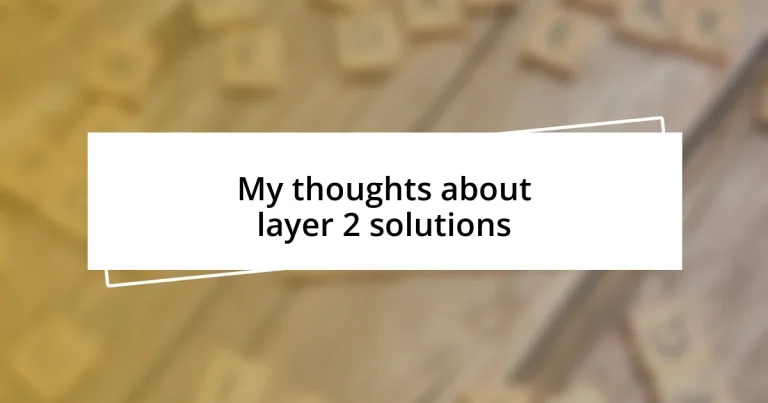Key takeaways:
- Layer 2 solutions enhance blockchain usability by providing faster transactions, lower costs, and improved scalability, ultimately making cryptocurrencies more accessible to everyday users.
- Prominent Layer 2 solutions like Polygon, Optimism, and Arbitrum offer unique features that streamline transactions and enhance Ethereum’s ecosystem.
- Challenges such as security concerns, integration complexity, and interoperability need to be addressed for Layer 2 technologies to achieve widespread adoption and a seamless user experience.
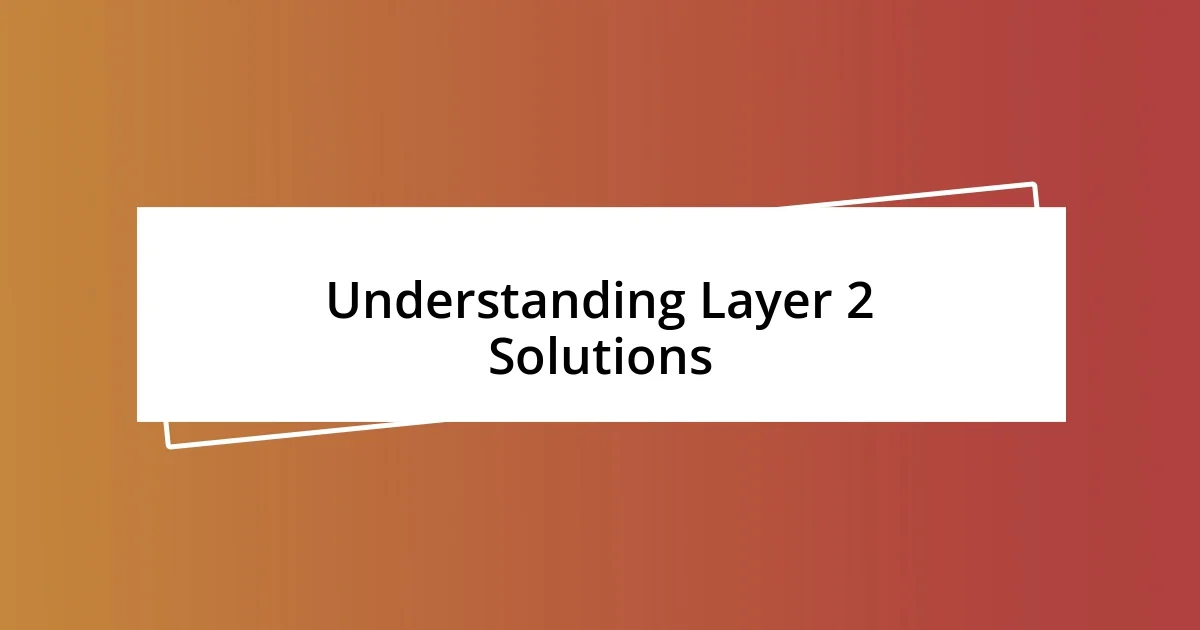
Understanding Layer 2 Solutions
Layer 2 solutions are like highways built on the existing roads of blockchain networks. They allow for faster transactions and reduced costs, which is incredibly important given my experience with network congestion during peak times. Remember the last time you tried to send a transaction, only to be left staring at a loading screen? Layer 2 aims to solve that frustration.
I vividly recall a time when I was waiting for a transaction to clear on Ethereum, and it felt like my digital assets were stuck in limbo. Layer 2 technologies, such as rollups and state channels, promise to alleviate that stress by processing transactions off the main chain. This not only speeds things up but also helps to ease the congestion that can slow down the entire network.
Think about how often you’ve experienced delays during busy periods—Layer 2 solutions have the potential to revolutionize how we interact with blockchain technology. It’s fascinating to consider how these enhancements can lead to a smoother and more user-friendly experience, making cryptocurrencies more accessible to everyone, not just tech enthusiasts. What might that shift mean for the broader adoption of digital currencies?
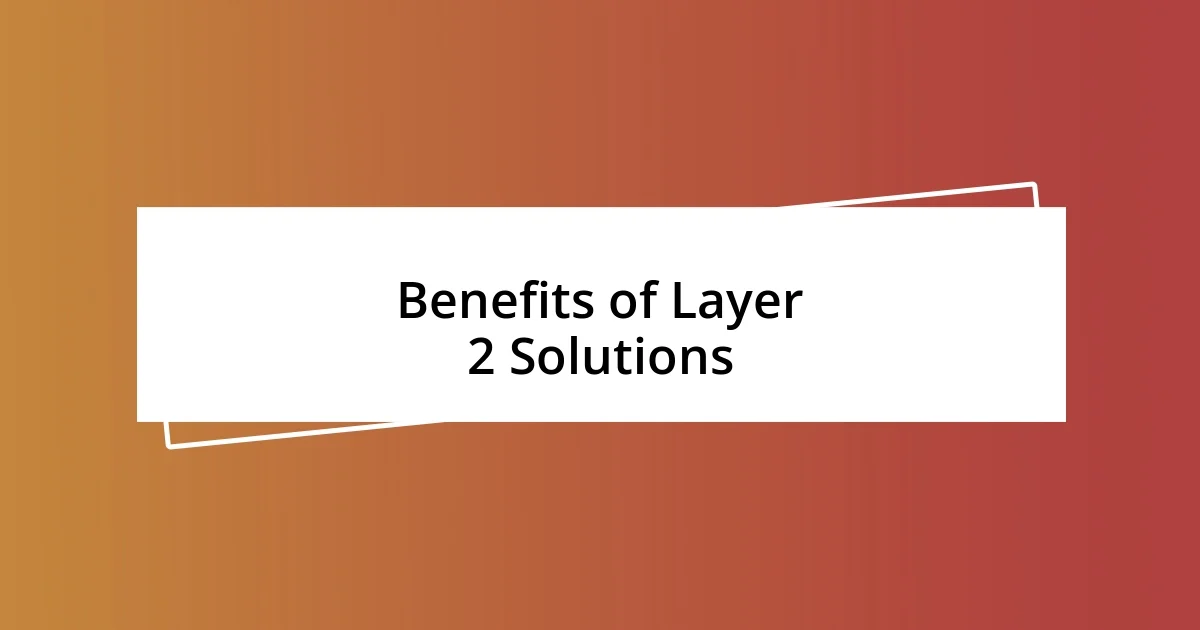
Benefits of Layer 2 Solutions
Layer 2 solutions bring a multitude of benefits that can truly change the way we interact with blockchain technology. For instance, when I first started using cryptocurrencies, the transaction fees on Ethereum would skyrocket, especially during busy times. I remember a moment where I wanted to transfer tokens, but the gas fees were so high that it felt like I was paying a toll just to cross the street! Layer 2 solutions can dramatically reduce these fees and provide a more seamless experience for everyday users.
Here are some key benefits of Layer 2 solutions:
- Lower Transaction Costs: By processing transactions off the main chain, fees are significantly reduced, making it more economical for users.
- Increased Speed: Transactions settle faster since they don’t need to wait for confirmation from the congested main network.
- Scalability: Layer 2 can accommodate more users without burdening the primary blockchain, making it easier for more people to participate.
- Enhanced User Experience: With faster and cheaper transactions, users can freely engage without the frustration of long wait times or unexpected costs.
- Interoperability: Layer 2 solutions can facilitate transactions across different blockchain networks, enhancing the overall functionality of the ecosystem.
Reflecting on my early days, I’d often hesitate before making transactions due to the unpredictable costs. Layer 2 had entered the scene just in time! Now, the idea of conducting transactions without jumping through hoops is not just a dream; it’s a tangible benefit I look forward to every day.

Popular Layer 2 Solutions Overview
When considering popular Layer 2 solutions, it’s intriguing to see how they cater to different needs within the blockchain space. Among them, Polygon (formerly Matic) has gained a solid reputation for its robust framework, providing developers with user-friendly tools to build scalable applications. I remember exploring Polygon for the first time and being impressed by its commitment to enhancing Ethereum’s ecosystem while reducing transaction costs.
On the other hand, Optimism and Arbitrum implement optimistic rollups, which further optimize transaction speeds and costs by allowing multiple transactions to be batched together. I actually experienced the thrill of trying out Optimism during a major event and marveled at how quickly my transactions went through, unlike some earlier frustrating experiences on Ethereum.
Here’s a quick overview that compares these solutions:
| Layer 2 Solution | Main Features |
|---|---|
| Polygon | Scalable, multi-chain support, and significantly lower fees for Ethereum |
| Optimism | Optimistic rollups, faster transactions, and Ethereum compatibility |
| Arbitrum | Optimistic rollups with a strong focus on security and lower fees |
Each of these Layer 2 solutions plays a vital role in making blockchain technology not just faster, but also more user-friendly. It’s exciting to think about how these advancements can continue to shape our digital interactions.
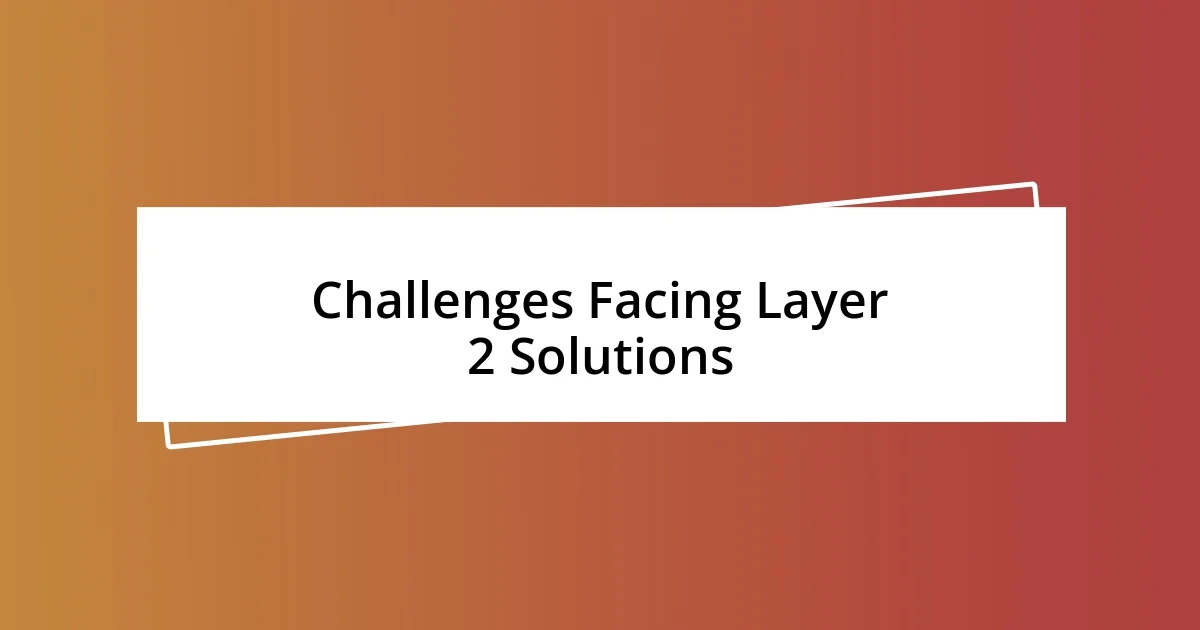
Challenges Facing Layer 2 Solutions
Layer 2 solutions, while promising, come with their own set of challenges that can sometimes feel daunting. One major hurdle is the issue of security. I recall a conversation I had with a colleague who was hesitant to use Layer 2 solutions for significant transactions. His concerns revolved around whether these systems could provide the same level of trust and reliability as the main blockchain. This uncertainty is something many face, especially given the various hacks and vulnerabilities that have emerged in the past.
Another challenge is the complexity of integration. When I first attempted to explore various Layer 2 solutions, it felt like navigating a maze. Each platform had its own set of protocols, and the learning curve was steep. I remember thinking, “Is my experience really worth all this hassle?” For newcomers, this complexity can be a barrier to entry, dissuading them from fully embracing these novel technologies.
Moreover, interoperability issues can hinder the seamless experience users crave. I recently tried using a Layer 2 platform that had trouble connecting with other networks. It was frustrating because I wanted to maximize my assets but found myself stuck in a loop of compatibility errors. This experience highlighted a significant concern: for Layer 2 solutions to thrive, they must work well across different ecosystems to truly facilitate a fluid user experience.
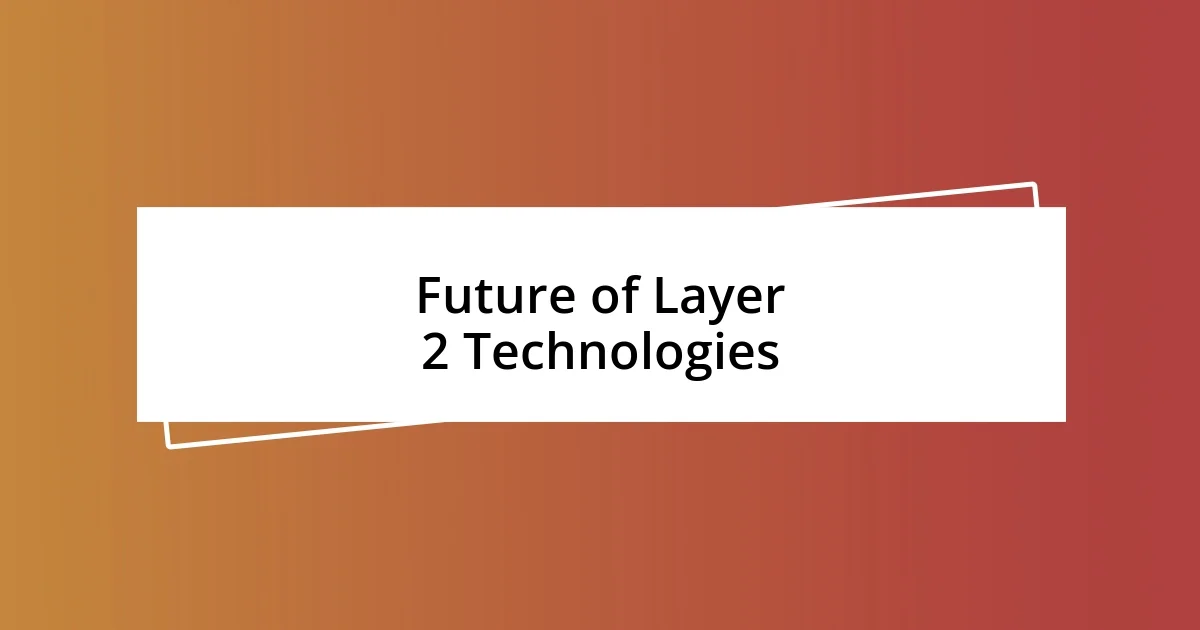
Future of Layer 2 Technologies
The future of Layer 2 technologies looks incredibly promising, especially as they continue to address some of the pressing scalability issues faced by traditional blockchain networks. I often think about how these advancements are not just about speed; they’re redefining the user experience, making blockchain more accessible to non-technical users. One of the most exciting developments I’ve noticed is the growing trend of Layer 2 solutions incorporating more robust security protocols, which is a crucial factor for widespread adoption.
As I delve deeper into this topic, I can’t help but imagine what the blockchain landscape will look like in a few years. The evolution of Layer 2 solutions may lead to an entirely new ecosystem where transactions are instantaneous and fees are negligible. I vividly recall a time when every transaction seemed to drag on, often making me second-guess my choices. I wonder how many people are waiting for that seamless experience, where they don’t have to worry about fees eating into their profits or delays holding up their plans.
Moreover, as developers get better at optimizing Layer 2 solutions, I believe we will see increased interoperability between different platforms. Just recently, I encountered a situation where I had assets stuck on one platform, unable to transfer them due to compatibility issues, and it left me feeling frustrated. If the future holds easier cross-chain transactions, wouldn’t that be a game changer? This integration could significantly enhance user confidence and promote a unified blockchain experience, encouraging even more mainstream adoption.












